In Photos: Civil.ge Joins EUMM Patrol, Visits Occupation Line
On Wednesday, November 13, together with his colleagues, Civil.ge’s Otar Kobakhidze joined the European Union Monitoring Mission (EUMM) patrols to observe the line of Russian occupation near the village of Odzisi, in Dusheti Municipality.
The EUMM is an unarmed civilian monitoring mission deployed by the EU member states to Georgia to contribute to the stabilisation of the situation on the ground following 2008 Russo-Georgian war, that resulted in Russian occupation of two Georgian regions of Abkhazia and Tskhinvali/South Ossetia.
A few weeks ago, the EUMM became the first ever Common Security and Defense Policy mission to include staff from all 28 member states of the Union.
Civil.ge offers you some of the photos from the visit.
Odzisi, located some 50 km away from Tbilisi, is less than an hour drive from the Georgian capital.

The village lies on the left side of the River Ksani. The river serves as the line of occupation in this section.

On the other side of Ksani, adjacent to occupied village Akhmaji, one can observe Russian ‘border guards’ base.
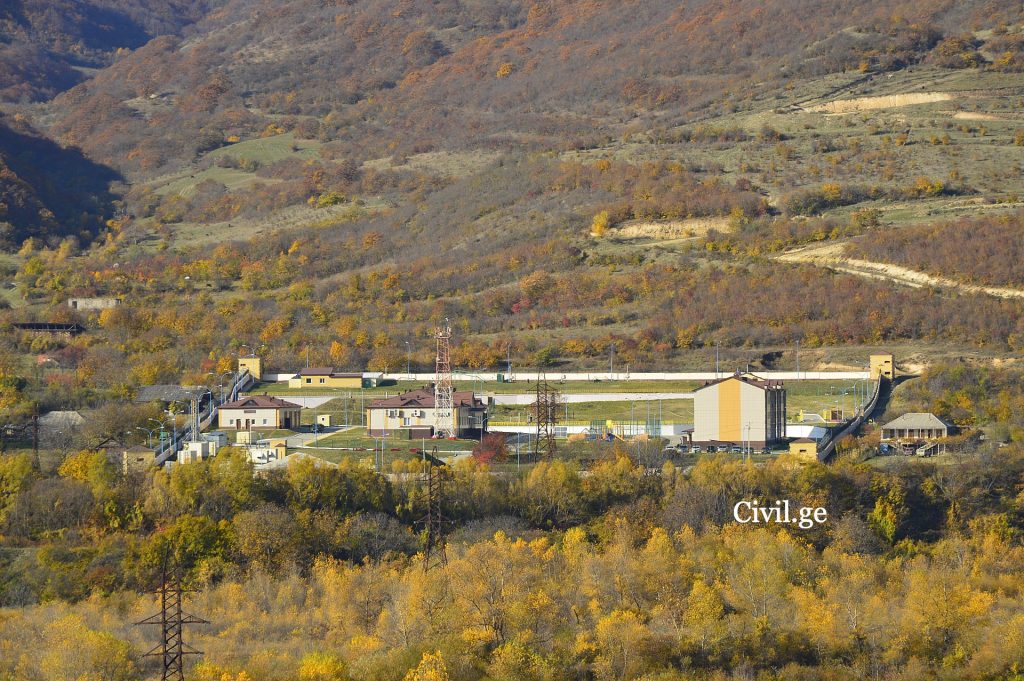
EUMM monitors are observing Russian ‘border guards’ base.
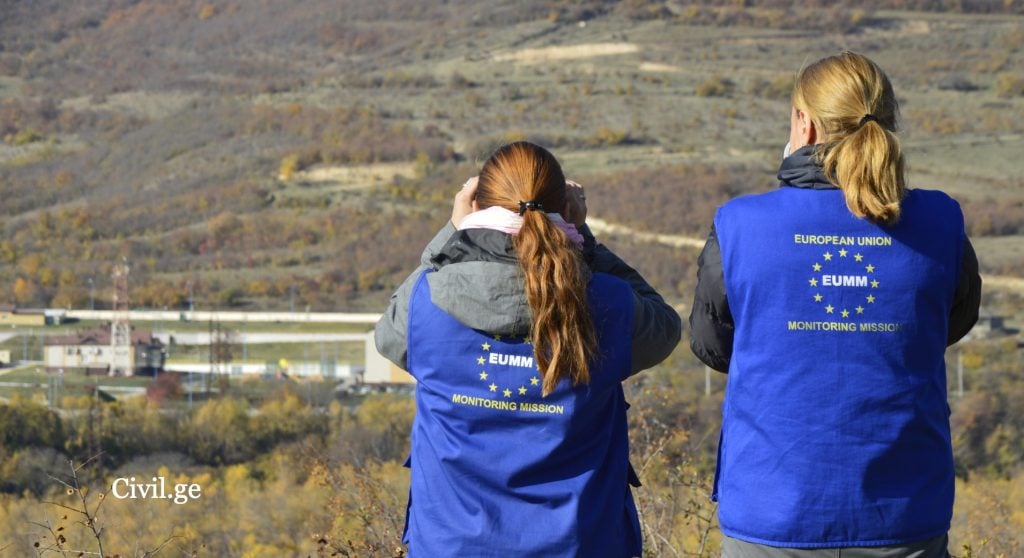
The line of Russian occupation often does not follow geographically clearly defined lines, however. Few hundred meters south to the Russian base lies the “green fence of “borderization” cutting the village of Tvaurebi in two, with a single house of the village remaining within the Russian-occupied territory.
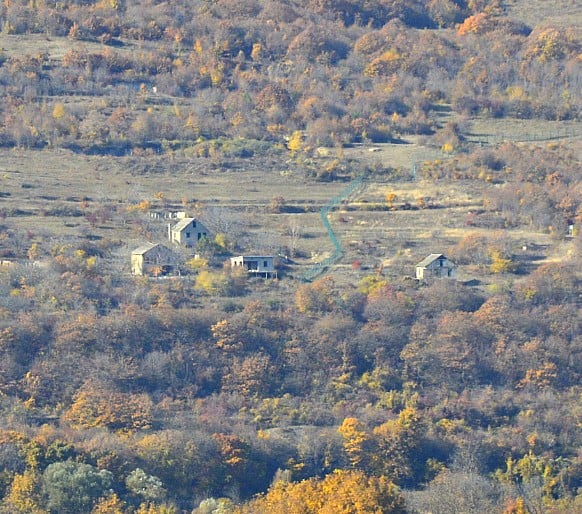
The ruined houses and damaged infrastructure in Tvaurebi serve as the remainders of the lasting scars the conflict left on locals and their livelihoods.
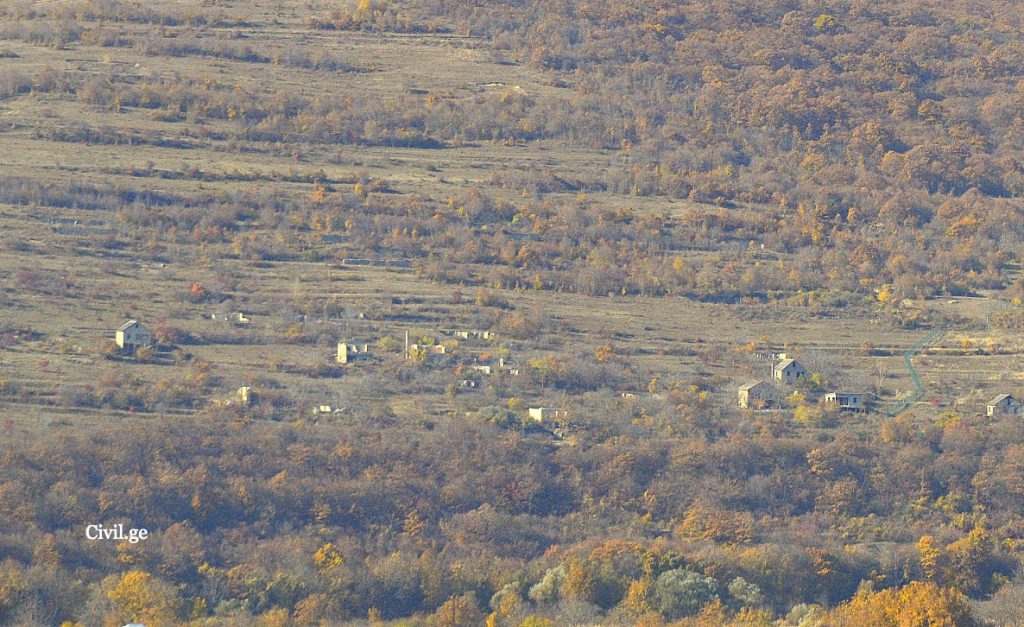
North to the Russian base, down in the river ravine, one sees the green sign, that warns the Georgians of dangers of crossing the “state border.”

A few hundred meters away from this spot lies Odzisi crossing point that Russia-backed Tskhinvali authorities keep closed since early September, further complicating the lives of locals on the both sides of the line.

Odzisi crossing point, marked in orange circle on this map, is usually the busiest crossing point between Tskhinvali region and Georgia proper. It serves residents of occupied Akhalgori municipality, more than half of which are ethnic Georgians. EUMM reported that the crossing point serves 400 persons daily in normal days.
The second stop of the visit is village Bakakurebi, that lies a few hundred meters south-east to Odzisi,. Occupied region’s southeastern-most territory lies right behind the village, with the line of occupation following the top of the mountain. During the patrol we meet two local men, that complain that villagers are afraid of crossing the dividing line, fearing being detained by the occupation forces.
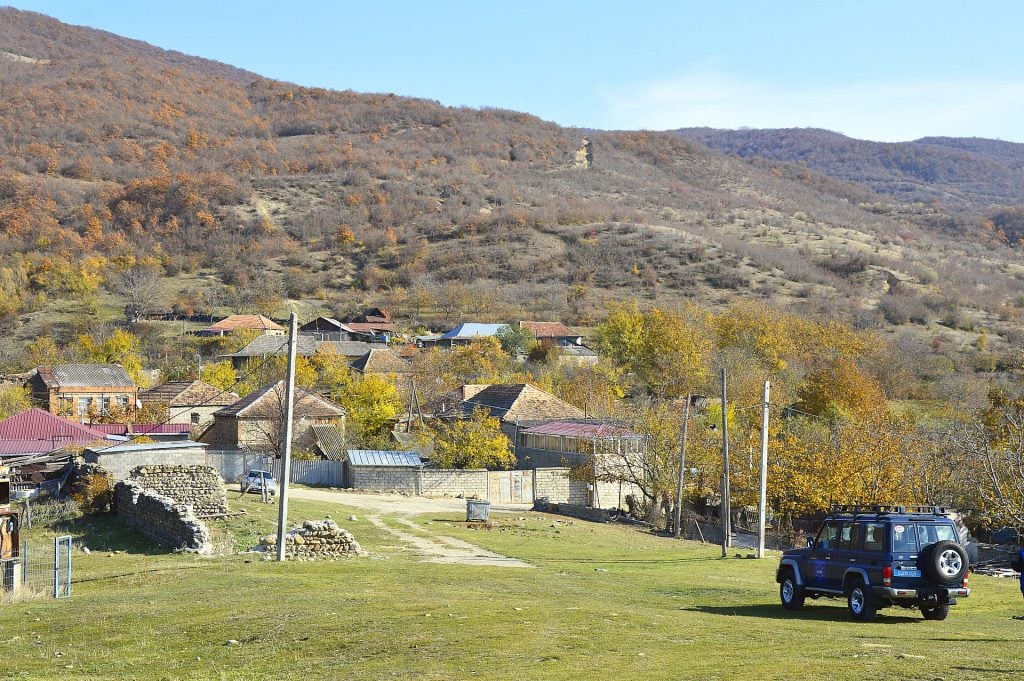
On the way back to Tbilisi the road runs across the ravine of the River Ksani, that gave the name to feudal Georgia’s influential duchy, that evolved in late middle ages and existed until the Russian conquest of eastern Georgian Kartli-Kakheti kingdom. This area served as the Southeastern-most frontier of the duchy.

Autumn’s changing colours dominate landscapes of Shida Kartli on the road back to the capital.
